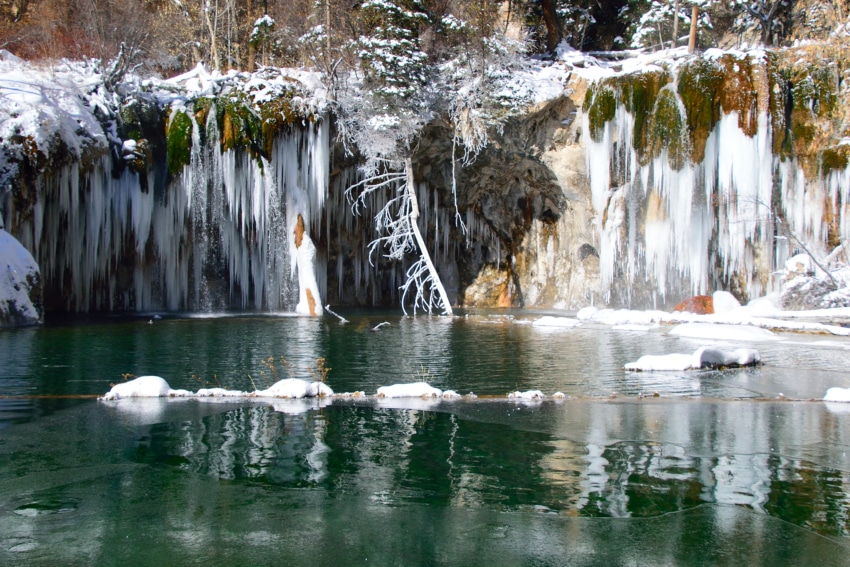
Hanging Lake Winter Colorado Hike Guide
Hanging Lake is one of the most iconic and popular hikes in Colorado. Located just outside of Glenwood Springs, this short hike is visited by thousands of hikers each year. As of 2019, a daily permit is required to hike to Hanging Lake in the Winter and all year round. During the winter, the hike is still family friendly, just be sure to have some extra gear to tackle the snow and icy conditions. ***PLEASE NOTE, as of 8/1/21 this hike is closed due to mudslides in the area. No ETA of reopening. ***
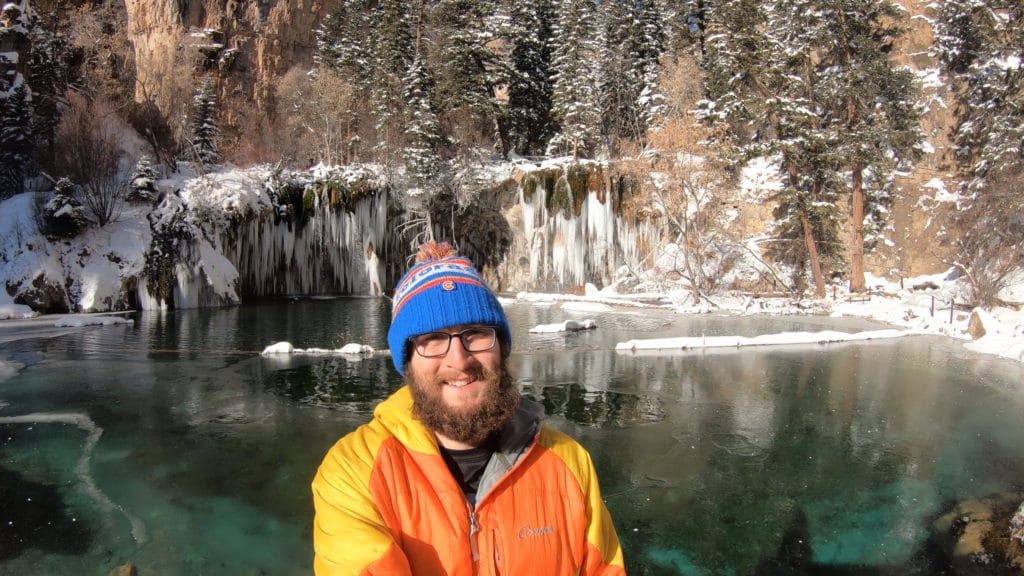
Hanging Lake Winter Quick Facts
Virtual Trail Guide: Hanging Lake in the Winter
Hanging Lake in the Winter Rating: ★★★★★ (5/5 Stars)
Distance: 3.1 Miles RT
Elevation Start: 6,095 ft
Highest Point: 7,327 ft
Total Elevation Gain: 1,200 ft
Estimated Time to Complete: 2-3 Hours RT
Difficulty: Easy to Moderate – How do I Grade my Hikes?
Class: Class 1 – What does this mean?
Season: Year round (Expect snow November- April)
Directions to Hanging Lake in the Winter
Trailhead: Hanging Lake
Getting Here:
From Points East
Take I-70 to exit 121 and get back on the highway going west. Exit at Hanging Lake (exit 125).
From Points West
Take I-70 to exit 125 and park in the small lot near the visitor’s center.
You can enter Hanging Lake into your favorite navigational device.
Fees: $12 during summer, $10 during winter (as of 2021) permits must be purchased. View more information here.
Parking: Parking for this hike in the Winter is very straight forward, just follow the directions above and park in the small lot. The lot does have bathrooms and wifi in the building to purchase a daily permit if you need to. The lot is very small but can fit 20-30 cars. During the spring and summer months, be sure to park at the Hanging Lake Welcome Center (directions above).
Summary
Hanging Lake Camping: There are not any solid camping options near Hanging Lake, seek alternative lodging/camping spots. Glenwood Springs is the most popular spot to stay.
Dogs: The hike to Hanging Lake is not dog friendly at any time of the year due to its fragile ecosystem and heavy day use.
Make it a Loop: Hanging Lake is an out and back hike, but be sure to add the 300-400 additional yards of hiking to visit Sprouting Rock above the lake.
Trail X Factors: Lack of Crowds/Ice
Without a doubt, the two biggest X factors about hiking Hanging Lake in the Winter is the lack of crowds on a typical day. Unlike summer months where the trail is crawling with other “hikers,” the winter is usually pretty quiet.
Although winter hiking will see similar trail conditions to the summer, the amount of ice, especially near Hanging Lake itself can be very tricky to deal with without microspikes or some kind of foot traction. I recommend using these for winter hiking, especially at Hanging Lake in the winter.
Hike Tip(s): The lake itself gets all the love on this hike and for a great reason. However, be sure to check out Sprouting Rock above the lake. It only adds a tiny bit of hiking and is equally as beautiful as the lake itself. In the winter it will partially (and sometimes completely) freeze which makes it even more unique.
Best Views: This hike in the winter has fantastic views at Sprouting Rock, the lake itself and of the canyon once you start climbing the stairs near the lake. If you are into frozen creeks, you essentially follow one all the up to the lake itself. Overall, I find the beauty of this hike equally impressive in the winter vs in the summer.
Hanging Lake Winter Trail Route
Gear Needed
- Dakine Poacher Winter Backpack
- Hiking Boots
- Hiking/SkiPoles
- Microspikes
- Yaktraks
- Optional: Snowshoes
- Optional: Gaiters
My Hike to Hanging Lake Winter: December 2019
This trip was a short but scenic hike that I do not feel warrants an entire write-up on. Check out some pictures from the hike below and watch my video recap on the beautiful Hanging Lake in the Winter below!
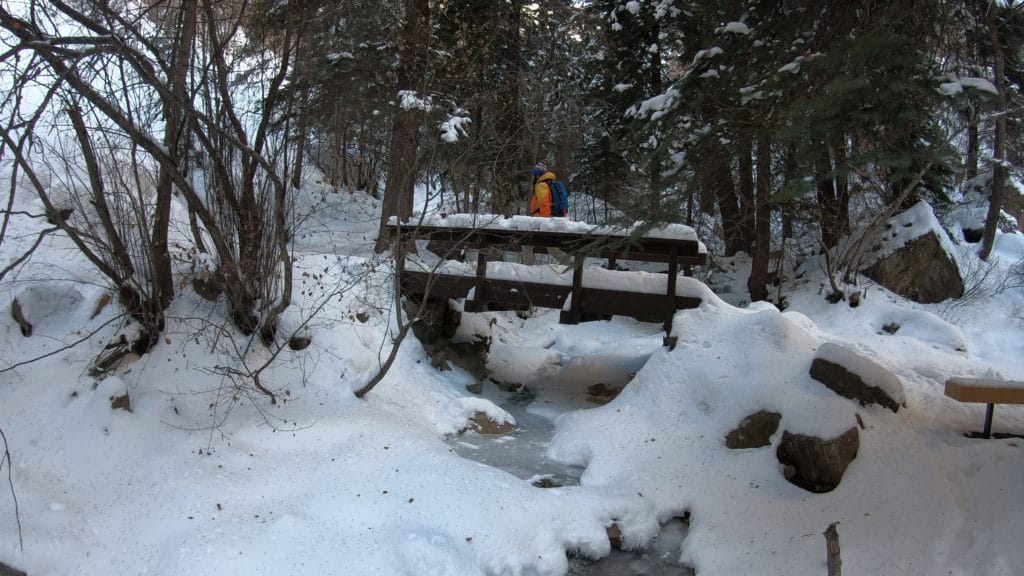
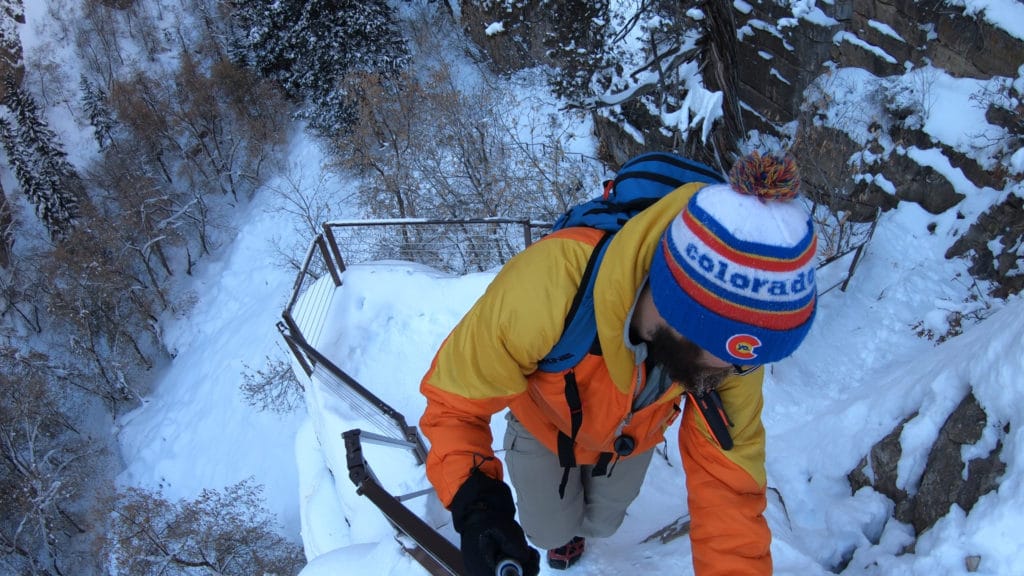
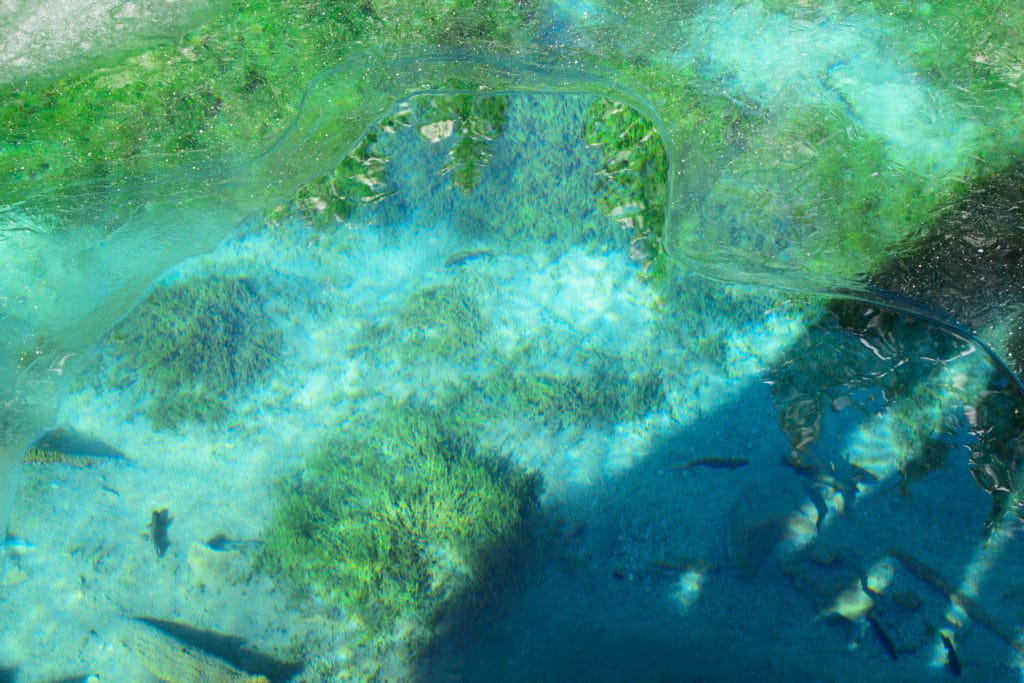
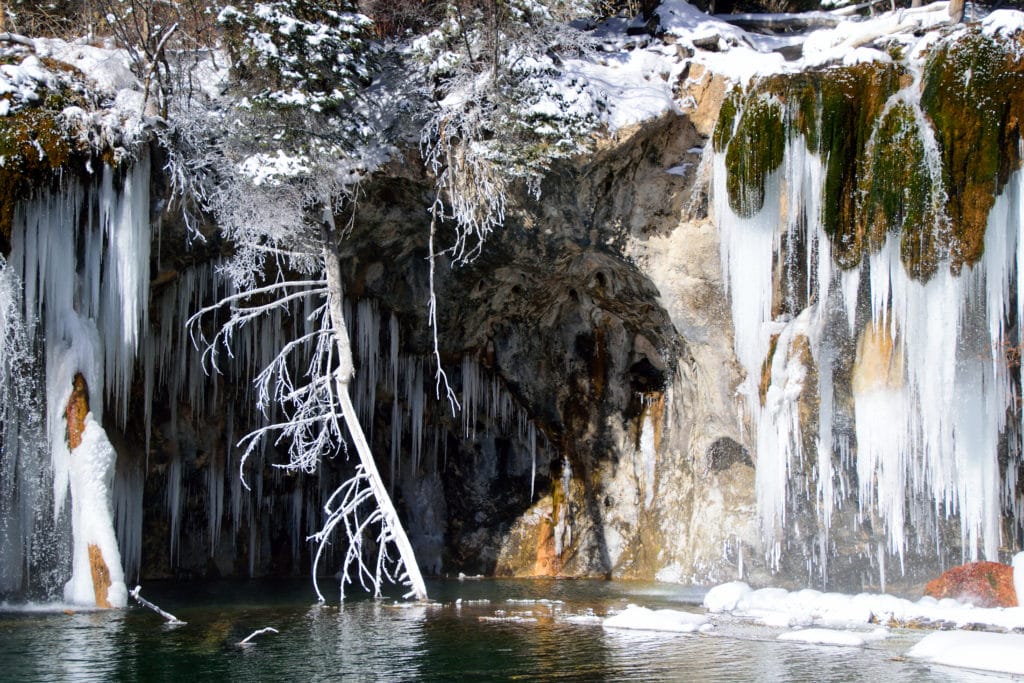
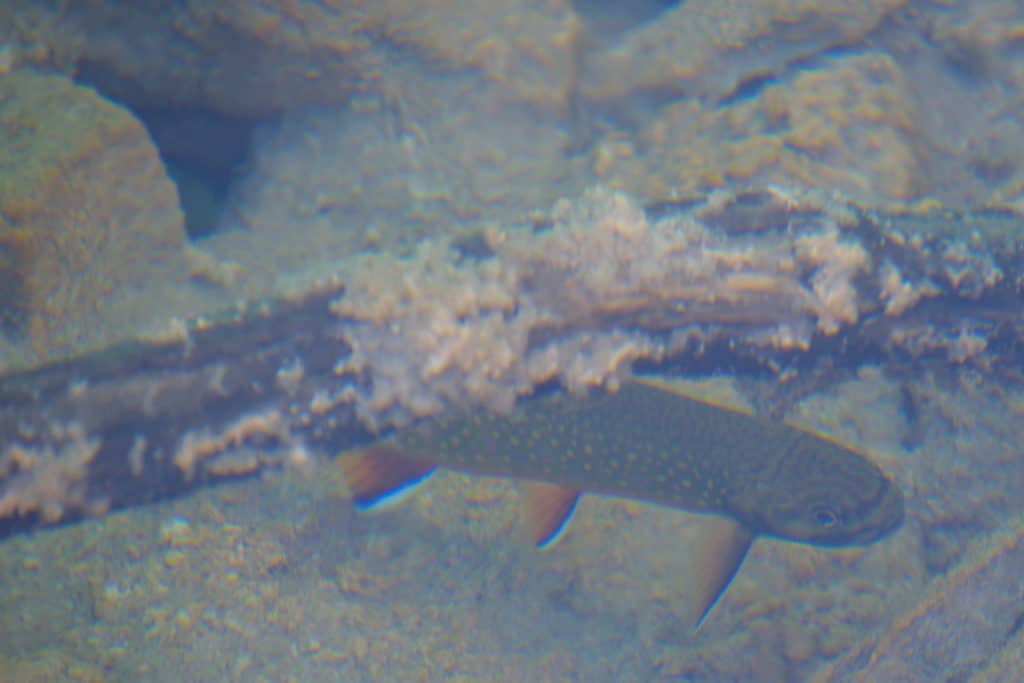
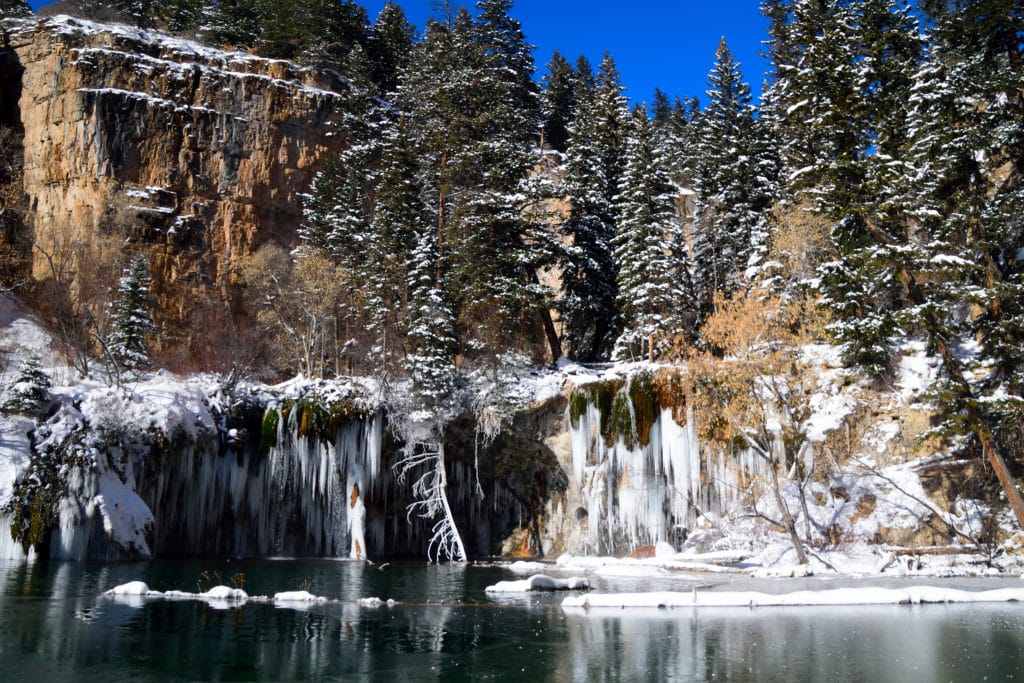
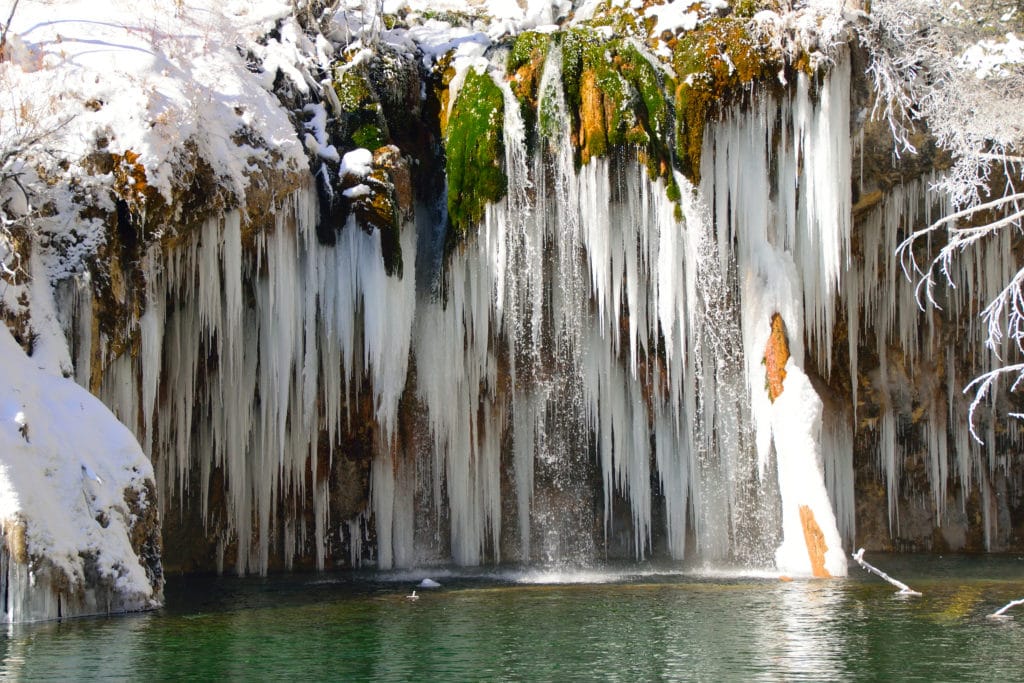
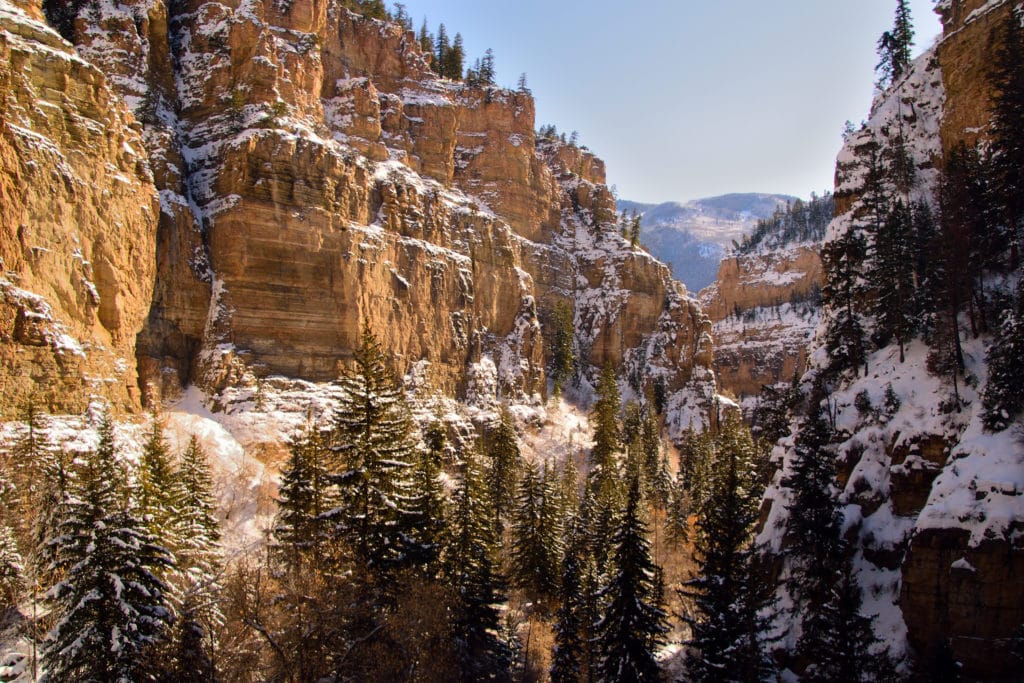
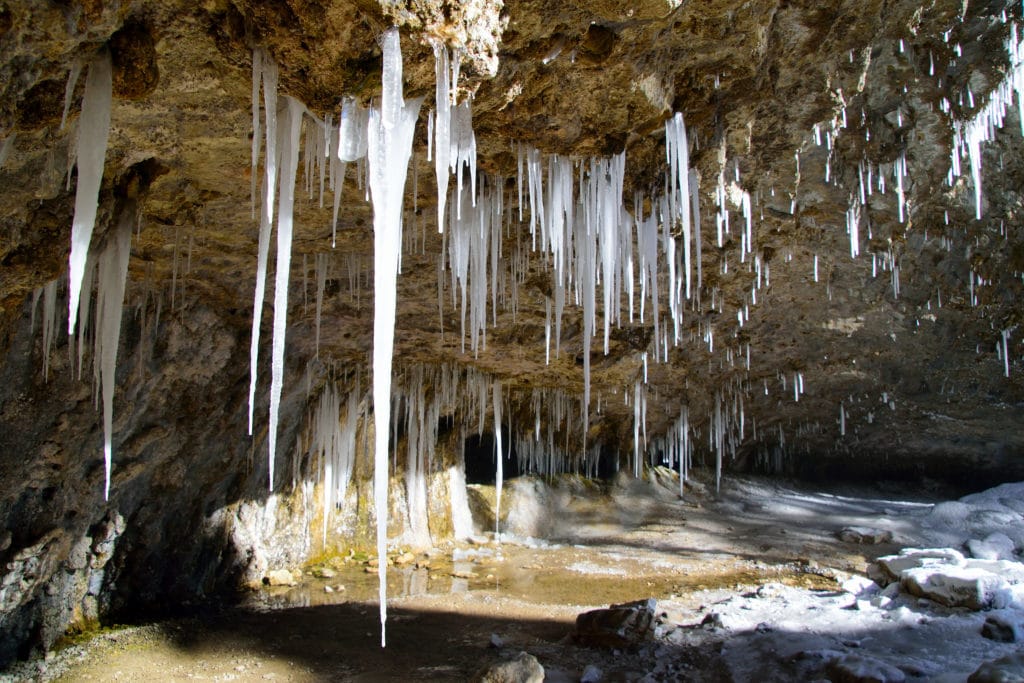
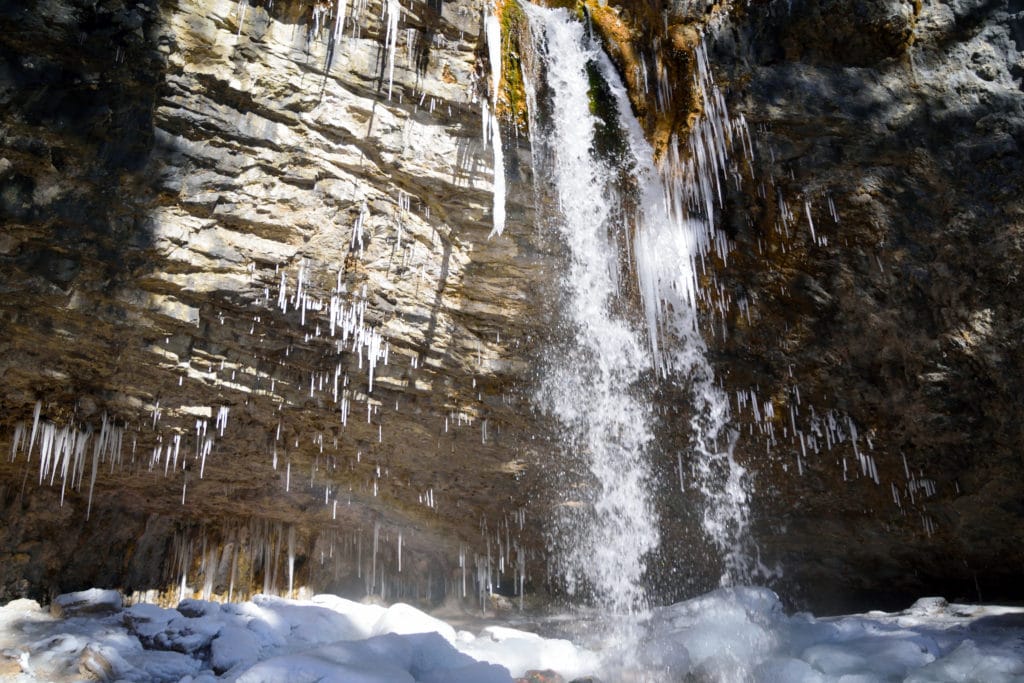
Sprouting Rock
Hanging Lake Winter Hike Virtual Trail Guide
Questions or comments about this hike? Leave a comment below or follow me on Instagram!

One thought on “Hanging Lake Winter Colorado Hike Guide”